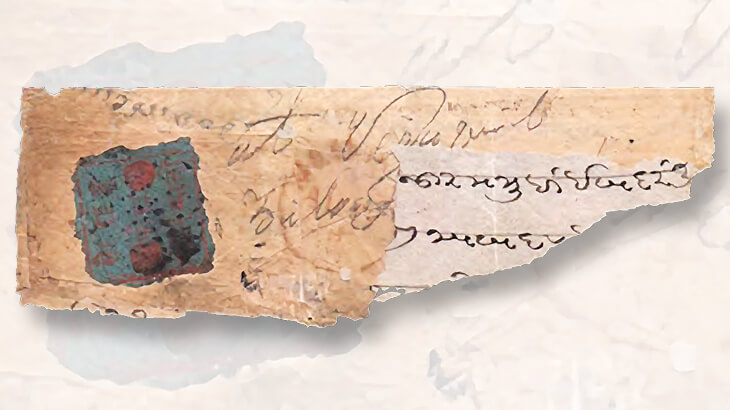Auctions
Stamps from two of India’s feudatory states sold by Stanley Gibbons
By Matthew Healey, New York Correspondent
Stanley Gibbons offered British Empire and worldwide stamps on Sept. 6 in London that included some rarely-seen items from India’s so-called feudatory states.
Although nominally under British control in the late 19th century, India was in reality a patchwork of princely (or feudatory) states, most of which were practically autonomous, and more than 30 of them issued their own postage stamps for local use. Many were crudely produced and lack English inscriptions which, together with their rarity, make them a challenge to collect.
Jammu and Kashmir were two of the states that issued their own stamps, beginning in 1866. Because they were ruled by the same sovereign, the two are listed together in the Scott Standard Postage Stamp Catalogue.
Connect with Linn’s Stamp News:
Sign up for our newsletter
Like us on Facebook
Follow us on Twitter
A pair of Kashmir 1a black stamps of 1867 (Scott 66) was tied to a gray cover by a red circular postmark of Srinagar, described as a very rare franking. The imperforate stamps, printed in watercolors on so-called native paper, show a primitive squared-oval design with inscriptions in both of the alphabets used for the Kashmiri language.
The cover more than doubled its presale estimate, selling for the equivalent of $8,400, including the 18 percent buyer’s commission charged by Stanley Gibbons.
An early stamp of Soruth, another of the princely states, was offered on a fragment of an envelope. The roughly separated 1a stamp, printed in 1868 in red on green paper (Scott 4) is tied to the piece by a grid of dots, with part of a Jaitpore postmark nearby. Accompanied by a British Philatelic Association certificate, the item sold for $11,475.
Away from India, the Gibbons sale offered some modern British errors, including a color-missing stamp used on a first-day cover.
Britain issued a set of three stamps in 1967 honoring painters, two classical and one contemporary. The latter, Laurence Stephen Lowry (1887-1976), is represented by his industrial cityscape titled Coming Out of School. A silhouette bust of Queen Elizabeth II in gold and the denomination 1/6, representing 1 shilling and 6 pence, complete the design.
Forty-one examples missing the gold head in error (Scott 516c) were reported sold by the post office, but to date only two unused examples and two on first-day covers have surfaced. The FDC, accompanied by a letter from the British Post Office to the man who discovered the error, sold for $4,590.
Britain’s 1973 Christmas issue included a se-tenant strip of five stamps (Scott 713a) showing scenes from the legend of Good King Wenceslas, who is said to have gone out on a cold winter’s night to help the poor.
Some were printed without the rosy-mauve ink, affecting the designs of all but the leftmost stamp in the strip. Seven such error strips are known; the one in the Gibbons sale sold for $11,475.
MORE RELATED ARTICLES
Headlines
-
US Stamps
Oct 7, 2024, 12 PMVasiliauskas named president of Mystic Stamp Co.
-
US Stamps
Oct 6, 2024, 5 PMApgar souvenir card available
-
US Stamps
Oct 6, 2024, 4 PMFirst Continental Congress and U.N. stamps receive Scott catalog numbers
-
World Stamps
Oct 5, 2024, 1 PMCanada Post continues Truth and Reconciliation series












